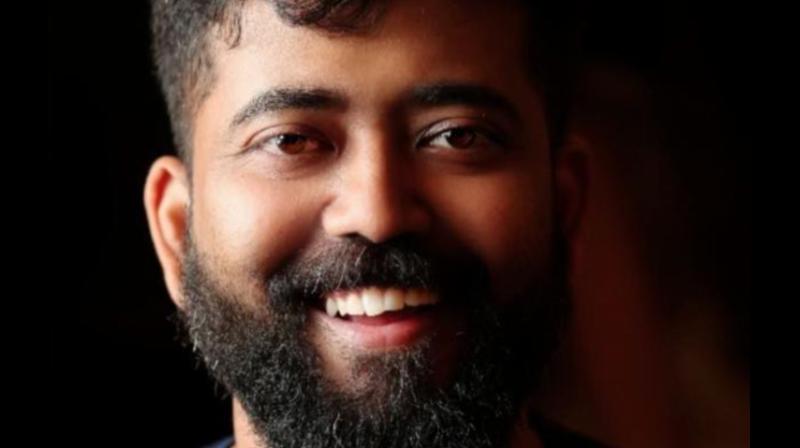In the rapidly evolving advertising landscape, where the fusion of creativity and technology is paramount, Karthik Nagarajan, CEO, Hogarth India, aims to redefine what it means to be a content experience company.
Under his leadership, Hogarth's game plan is to transform the industry with a future-proof production spine, leveraging its AI-driven content supply chain, personalisation, and commerce content to drive efficiency and innovation for its clients.
As highlighted at Cannes, Hogarth's launch of the ‘Production Studio’ underscores the company's belief that the future of asset creation will rely heavily on an AI-driven content supply chain.
In a chat with Manifest, Nagarajan gives us the lowdown on Hogarth’s commitment to diversity, equity and inclusion (DE&I), the agency's philosophy of being medium-agnostic, its collaborative efforts with other WPP agencies, and more...
Edited excerpts:
The move from GroupM's head of branded content to Hogarth - how have the last 18 months been?
It’s been fabulous working with both organisations. Despite them both being part of WPP, they couldn't be more different from each other. GroupM focuses on strategy, imagination, and shaping the future of advertising. Hogarth is distinctive in that way. It has a unique culture, filled with subject matter experts who live and breathe their work. This creates a distinctly different organisational culture.
How does Hogarth collaborate with other WPP agencies to deliver integrated solutions and contribute as a future-ready production spine?
One of the most important things for us is to collaborate with WPP and add value to clients from a unified perspective. It’s not just about having the best talent within WPP; it’s about integrating our ways of working to strengthen relationships with companies like Coca-Cola and Mondelez. The WPP agencies work together in a highly unified manner, with joint briefs, shared KPIs, and as a seamless extension of each other’s teams. This high level of collaboration is why we love pitching and working together. To see the results of these collaborations, we don’t need to look further than WPP's recent Cannes Lions wins for craft and creativity.
You've emphasised Hogarth's approach to content as 'medium agnostic' in a recent interview. How does this philosophy influence your creative strategies and client engagements?
Our focus is on delivering a great content experience for the user, regardless of the medium. We have teams of subject matter experts and platform specialists, which is why we consider ourselves mostly ‘medium agnostic’. This isn't due to indifference but because we understand what works across different platforms.
A prime example of this is our work in commerce content in India. Our goal is to ensure that the excellent brand experience a company like Hindustan Unilever offers through its mainline channels is replicated on e-commerce platforms. This is a demonstration of how we bring mainline brand experience to commerce, underscoring our obsession with content experience within each specific medium.
What specific strategies or innovations are driving Hogarth’s growth as a content experience company?
At this point, we’re driving several initiatives, but I'd like to highlight two key ones. First, as one might have seen in Cannes, we discussed the launch and offerings of our ‘Production Studio’ extensively. This initiative, driven by Hogarth and integrated with WPP Open, stems from our belief that the future of asset creation will rely heavily on an AI-driven content supply chain. We are leveraging partnerships with companies like Nvidia to bring this vision to life. Our investment in an AI-led content supply chain is a game changer, enabling personalised, brand-compliant content creation with exceptional efficiency.
The second initiative is our foray into commerce content in India. The big shift we’re witnessing here is the emergence of the 'zero moment of truth'. Today, consumers often discover brands or products through commerce platforms, which can be the starting point of their journey rather than the end. However, many companies still approach commerce the way they did social media a decade ago, creating generic content and posting it across platforms.
We aim to change this mindset, especially with forward-thinking clients like Unilever. By demonstrating why commerce is the new moment of truth, particularly in categories like beauty and food, we highlight the need for a dedicated lifecycle management setup for commerce content. These initiatives are areas where we are currently in overdrive.
Who would you currently consider as competition?
Our industry in India is incredibly multifaceted at this point. In my opinion, anyone creating a great content experience for users is a competitor. It's evolved to a stage where many organisations now have their own content and production capabilities. So, while we do compete with them, it’s important to note that for us, content isn’t just one aspect of our business—it is our entire focus. This is why we are a content experience-centric company.
Hogarth has invested in transformative technologies like virtual production and AI dubbing. Can you share examples of how these advancements have reshaped production efficiencies and client outcomes?
In India virtual production has not taken off yet and is still finding its place. Globally, however, virtual production is uniquely driving both efficiency and sustainability. Traditionally, production has a large carbon footprint, with many people travelling and large setups requiring sustained electrification. Virtual production reduces this footprint and helps clients achieve zero-waste goals while also increasing efficiency by reducing production time. Although adoption in India has been slow, the potential benefits are clear.
On Hogarth's website, a 'gender pay gap' report has been published for 2023. Could you elaborate on the strategies and initiatives Hogarth is pursuing to reduce this gap and enhance female representation in senior roles, especially following the recent promotions to C-level positions?
We are relatively ahead of the curve when it comes to this. Our core leadership group comprises more than 45% women, which is significantly different from other organisations where female representation falls drastically at higher levels. Remarkably, all our regional heads are women. In India, we've also managed to eliminate the gender pay gap for similar roles, a challenge still present in other regions globally. However, we believe 45% is still low, and aim to increase female representation further as we move up the hierarchy.
How does Hogarth support LGBTQ+ inclusion and address pay equity for LGBTQ+ employees, following its recognition in the India Workplace Equality Index 2020?
Diversity and inclusion aren't just checkboxes for creative organisations like ours; they are essential for growth. The more diverse and inclusive we are, the more we can thrive. For me, inclusion is a growth strategy, not an afterthought. We believe in this personally, and our organisation strongly supports it.
One impactful aspect of our journey has been our sensitisation workshops. These are crucial because inclusivity isn't just about having diverse talent; it's also about preparing the organisation to be inclusivity-ready. These workshops help the entire organisation understand and embrace our inclusivity goals, making them extraordinarily beneficial.
Additionally, the proof of the pudding is our commitment to diversity. We prefer more actions over workshops and hiring diverse talent, both for full-time roles and internships. Inclusivity for us isn't limited to the queer community; it extends to people with disabilities and neurodiversity. Our approach is holistic, ensuring that our organisation is truly inclusive in every aspect.












